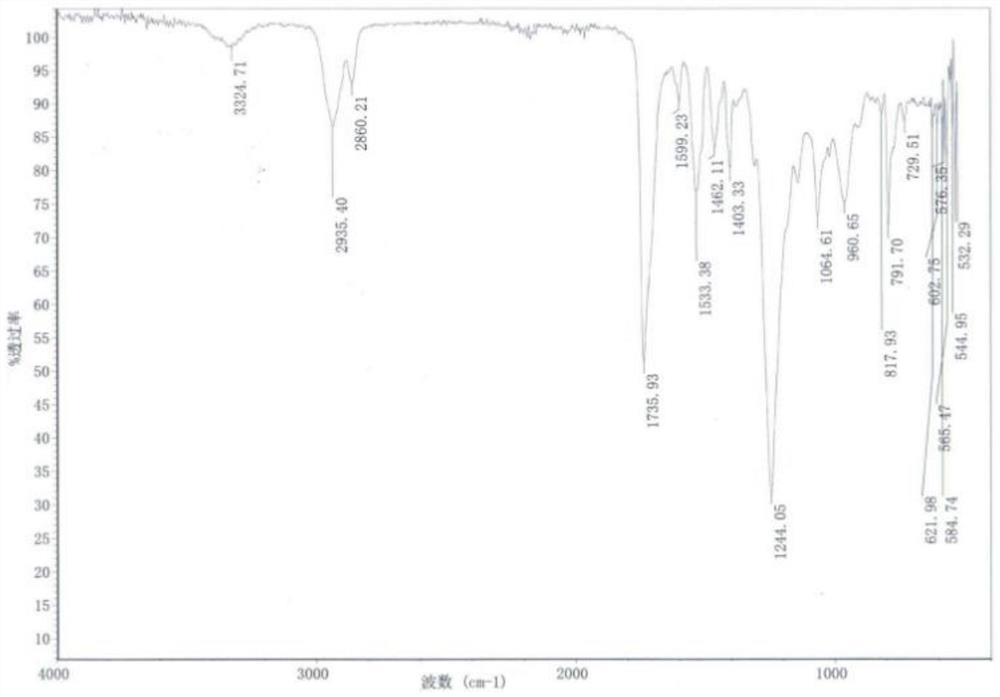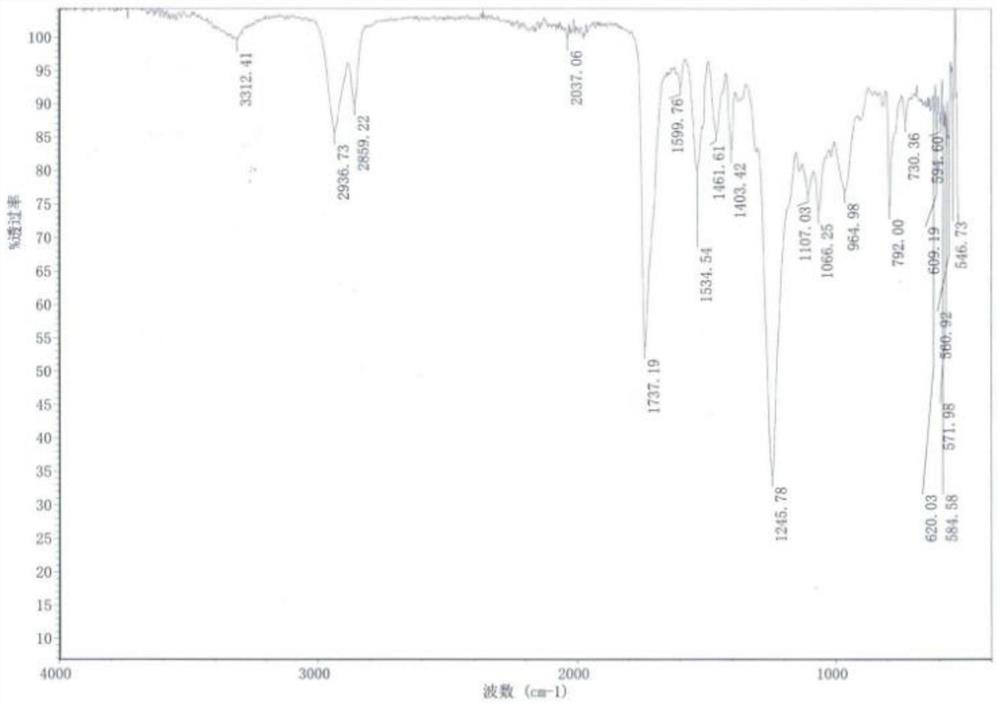Weather-resistant island-and-island fiber base fabric and preparation method and application thereof
A weather resistance, base fabric technology, applied in fiber processing, fiber type, non-woven fabrics, etc., can solve problems such as high cost and environmental pollution, and achieve the effect of improving weather resistance, excellent fleece feeling, and avoiding water waste.
- Summary
- Abstract
- Description
- Claims
- Application Information
AI Technical Summary
Problems solved by technology
Method used
Image
Examples
Embodiment 1
[0068] (1) Put poly-3-methylpentanediol adipate diol (0.03 mol), polycarbonate diol (0.1 mol), and solvent N,N-dimethylformamide (100 ml) into the reaction flask , mix evenly, put in hexamethylene diisocyanate (0.12mol), the catalyst bismuth neodecanoate (0.01g) react at 95 ℃, until the isocyanate group content is constant;
[0069] (2) After the prepolymerization is completed, add ethylene glycol (0.277mol), N,N-dimethylformamide (80ml), add MDI (0.4mol), react at 75°C for 1 hour, add N,N-dimethylformamide Formamide (200ml), cool down to below 50°C, add 4,4'-diaminodiphenylmethane (0.11mol) dropwise, stop adding when the viscosity rises to 200Pa·s (25°C);
[0070] Then add DMF (92ml) to dilute to the viscosity of the reactant to 160Pa·s (25℃), add 0.003mol methanol terminator to react for 30min, cool down to 50℃ and discharge the material to obtain the weather-resistant polyurethane resin, solid resin The mass fraction is 30%.
[0071] The obtained product has a number-aver...
Embodiment 2
[0083] (1) Put poly-3-methylpentanediol adipate diol (0.044mol), polycarbonate diol (0.086mol), solvent N,N-dimethylformamide (100ml) into the reaction flask , mix evenly, put in hexamethylene diisocyanate (0.11mol), and react with bismuth neodecanoate (0.01g) as a catalyst at 95°C until the isocyanate group content is constant;
[0084] (2) After the prepolymerization is completed, add ethylene glycol EG (0.139mol), DMF (96ml), add MDI (0.278mol), react at 75°C for 1.5 hours, add N,N-dimethylformamide (150ml), Cool down to below 50°C, add 4,4'-diaminodicyclohexylmethane (0.139mol) dropwise, and stop adding when the viscosity rises to 200Pa·s (25°C);
[0085] Then add DMF (80ml) to dilute to the viscosity of the reactant to 160Pa·s (25℃), add methanol 0.003mol terminator to react for 30min, cool down to 50℃ and discharge the material to obtain the weather-resistant polyurethane resin, solid resin The mass fraction is 30%.
[0086] The obtained product has a number-average mo...
Embodiment 3
[0097] (1) Polytetrahydrofuran ether diol (0.017mol), poly-3-methylpentanediol adipate diol (0.02mol), polycarbonate diol (0.093mol), solvent N,N-diol Methylformamide (100ml) was put into the reaction flask, mixed evenly, put into hexamethylene diisocyanate (0.1mol), and the catalyst bismuth neodecanoate (0.01g) was reacted at 95°C until the isocyanate group content was constant;
[0098] (2) After the prepolymerization is completed, add ethylene glycol EG (0.322mol), DMF (100ml), add MDI (0.35mol), react at 75°C for 1.5 hours, add N,N-dimethylformamide (170ml), Cool down to below 50°C, add 4,4'-diaminodicyclohexylmethane (0.143mol) dropwise, and stop adding when the viscosity rises to 200Pa·s (25°C);
[0099] Then add DMF (80ml) to dilute to the viscosity of the reactant to 160Pa·s (25℃), add methanol 0.003mol terminator to react for 30min, cool down to 50℃ and discharge the material to obtain the weather-resistant polyurethane resin, solid resin The mass fraction is 30%.
...
PUM
| Property | Measurement | Unit |
|---|---|---|
| quality score | aaaaa | aaaaa |
Abstract
Description
Claims
Application Information
 Login to View More
Login to View More - R&D
- Intellectual Property
- Life Sciences
- Materials
- Tech Scout
- Unparalleled Data Quality
- Higher Quality Content
- 60% Fewer Hallucinations
Browse by: Latest US Patents, China's latest patents, Technical Efficacy Thesaurus, Application Domain, Technology Topic, Popular Technical Reports.
© 2025 PatSnap. All rights reserved.Legal|Privacy policy|Modern Slavery Act Transparency Statement|Sitemap|About US| Contact US: help@patsnap.com



